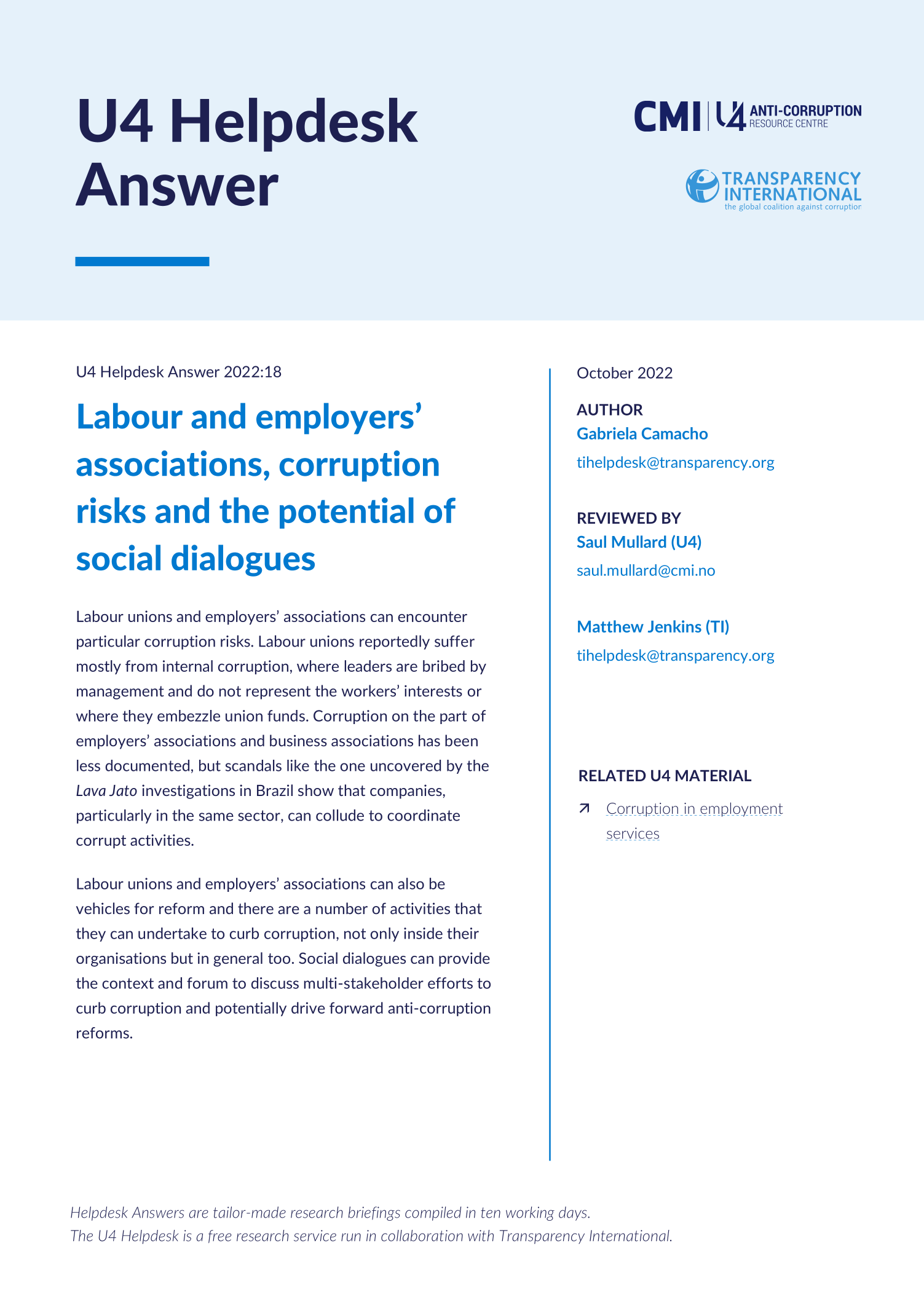Main points
- Labour unions can face generic corruption risks, like bribery and embezzlement, as well as risks emerging from the politicisation of unions. Additionally, racketeering has been widely covered in the media.
- Business associations can act as coordination fora where companies agree upon collusive arrangements including corruption.
- Social dialogue is any type of information exchange between employees and management – and in some cases the government as well – to achieve reform.

